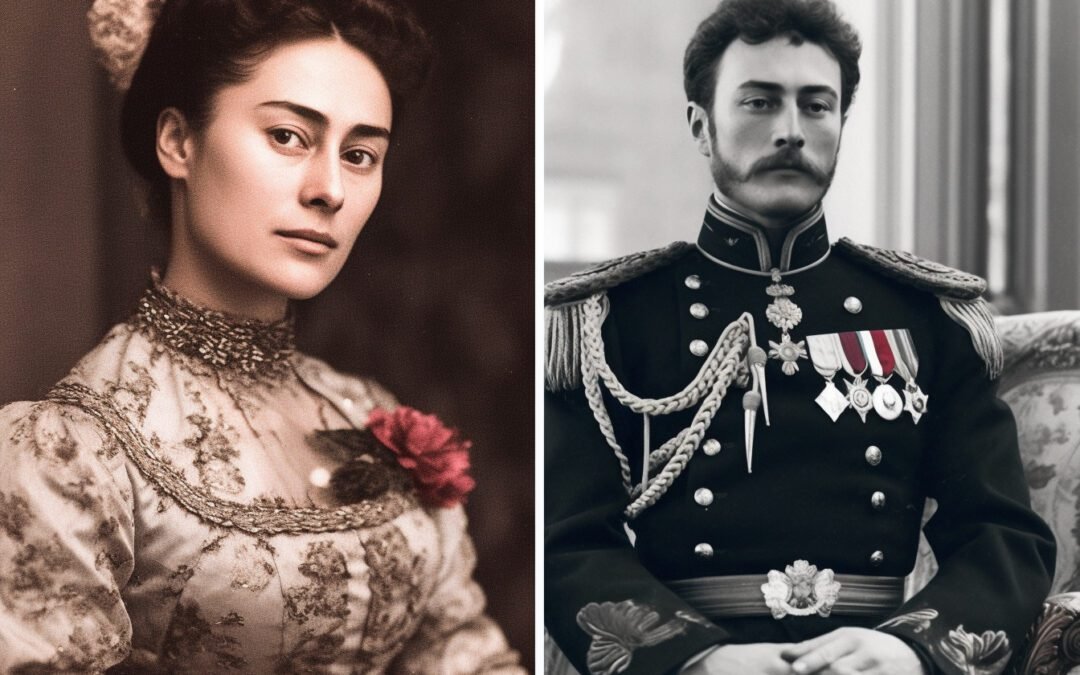Anna’s affair with Vronsky was a desperate cry for recognition and a courageous rebellion against a life of imposed mediocrity.
The landscape of 19th-century Russian aristocratic marriages often mirrored political and societal machinations more than personal affection or shared sentiments. Anna Karenina and Alexei Alexandrovich Karenin’s marriage is a testament to this reality. Tolstoy offers readers an intricate depiction of a woman trapped in societal constructs, attempting to navigate the delicate balance of duty and desire.
The union of Anna and Karenin can be critically examined from two angles: a social contract and an emotional void. Given the societal structures, women like Anna were often traded in marriage contracts to consolidate power, secure alliances, or simply to maintain appearances. But the foundation of such arrangements was rarely, if ever, love or genuine affection.
In Anna, we witness the archetype of a woman who, despite her privileges, is stifled emotionally. Her husband, Alexei Alexandrovich, is an emblematic figure of a man entrenched in his bureaucratic role, often prioritizing his societal obligations over personal ones. He is an embodiment of rigid conventionality, placing an undue burden on Anna to be the quintessential wife – a role she neither chose nor was innately attuned to. Karenin’s emotional inattentiveness and his clinical approach to marriage pushes Anna into a chasm of loneliness.
When probing deeper into the crevices of their marital life, a pattern emerges. Karenin, despite his rectitude, possesses a paradoxical nature. He exudes indifference masked as patience. To the society, he might appear as a doting husband, but under this facade lies a man who perceives his wife as a mere accessory. This disposition of Karenin triggers in Anna a profound sense of isolation, which over time crystallizes into resentment.
It is through this lens that one must view Anna’s subsequent infidelity. The emergence of Vronsky in Anna’s life should not be viewed merely as a caprice of her heart but as a yearning for emotional and physical satiation that had been denied to her. A relationship, irrespective of its societal validation, requires nurturing, understanding, and above all, mutual respect. While Karenin might have provided for Anna’s materialistic needs, he failed in satiating her emotional and physical hunger. This void, unattended, eventually became the epicenter of Anna’s existential turmoil.
Anna’s longing for emotional validation, often misconstrued as mere capriciousness, can be further evaluated by delving into Karenin’s psyche. A man of stature and reputation, Karenin’s very identity is entwined with societal perceptions. In many ways, Anna was yet another ornament in his collection, a testament to his societal standing rather than a companion. Karenin, despite his intellectual capacities, failed to realize that human relationships, especially marital bonds, cannot be merely transactional.
Another layer to this narrative is the comparative cultural analysis. While Anna’s Russian upbringing might have conditioned her to suffer in silence, it’s worth speculating how a woman from a different cultural context would react. Would a European or American woman, given the socio-cultural liberties, retaliate rather than retreat? Would she challenge the orthodox norms and confront her husband, demanding her rightful place in the relationship?
If we were to contextualize Anna’s behavior with that of a hypothetical European or American counterpart, differences would emerge, rooted deeply in societal norms and individual conditioning. Western women, especially during the late 19th and early 20th centuries, began vociferously advocating for their rights, both within the confines of their homes and in the broader societal spectrum. They waged wars against suffocating norms, demanding recognition and respect. Their Russian counterparts, however, had a different battle to fight – one that was intrinsically personal and yet overwhelmingly societal.
Implications for 21st Century Women
Contrary to what one could expect, the narrative of Anna Karenina is far from being a relic of the past as it remains a vibrant, active agent of transformation for the modern woman. The challenges faced by Anna mirror the challenges faced by women today, serving as a pertinent guide in the modern woman’s journey towards self-actualization, autonomy, and empowerment. Today, Anna Karenina emerges as a symbol of the modern woman’s fight against societal expectations, a beacon of hope and a call to action for women worldwide.
Why?
In the evolution of societal norms, the 21st century presents itself as a continuum of the 19th-century societal fabric. Modern women still grapple with a maze of expectations, unfair judgment, and roles that are often at odds with their individual aspirations. Thus, the pursuit of emotional fulfillment, as championed by Anna, remains a significant challenge. The façade of a perfect relationship often shrouds the underlying dissatisfaction and unmet emotional needs, leading to a life of quiet desperation. The lesson herein is the recognition and assertion of one’s emotional needs as valid and vital.
While the contemporary world boasts progress, the shadows of double standards, sexism, and discrimination linger and thrive. The societal condemnation faced by Anna mirrors the scrutiny women today face when defying conventional norms, and the ostracization of Anna serves as a stark reminder of the entrenched patriarchal structures that women continue to battle. As a result, many modern woman wield Anna’s narrative as a testament to the fortitude required to challenge and dismantle backward standards.
The echoes of Anna’s fight for autonomy resound in the incessant fight for gender equality. The modern woman, like Anna, finds herself at crossroads, seeking a balance between societal expectations and individual aspirations. But today the dichotomy of public and private lives has new challenging implications as women must navigate the treacherous waters of public scrutiny in a digital era where privacy is perennially at odds with public persona.
The modern woman must therefore glean from Anna’s narrative the importance of self-actualization. The restrictions faced by Anna are symbolic of the barriers that impede women’s self-actualization today. The modern woman must thus adopt a proactive stance, actively seeking opportunities for self-actualization, dismantling barriers, and challenging norms that hinder this quest.

